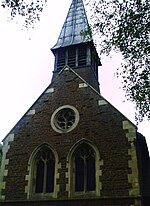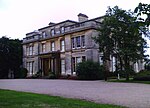Burton upon Stather
Civil parishes in LincolnshireUse British English from October 2014Villages in the Borough of North Lincolnshire

Burton upon Stather, also hyphenated as Burton-upon-Stather, is a village and civil parish in North Lincolnshire, England. The village is situated 5 miles (8 km) north from Scunthorpe, and is near the east bank of the River Trent. The civil parish consists of Burton upon Stather and the hamlets of Normanby and Thealby; its population at 2001 was 2,737, increasing slightly to 2,753 at the 2011 census.
Excerpt from the Wikipedia article Burton upon Stather (License: CC BY-SA 3.0, Authors, Images).Burton upon Stather
Stather Road,
Geographical coordinates (GPS) Address Nearby Places Show on map
Geographical coordinates (GPS)
| Latitude | Longitude |
|---|---|
| N 53.64941 ° | E -0.68485 ° |
Address
Burton-upon-Stather Post Office
Stather Road
DN15 9BS
England, United Kingdom
Open on Google Maps










